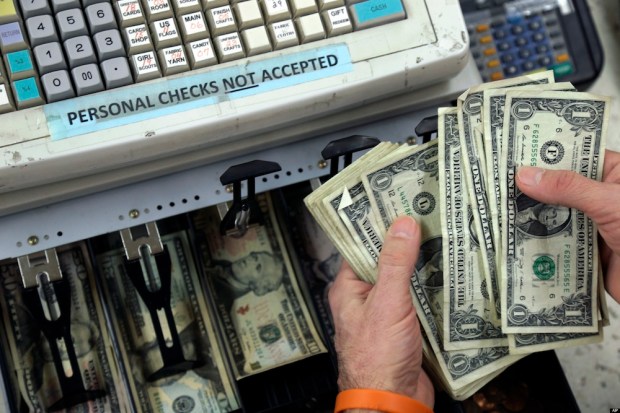National Business Systems VP: For Some SMBs, It’s Still Wait-And-See On EMV

The transition to EMV in the U.S. is still underway, three years on. National Business Systems VP David Riley notes that some SMBs lack awareness when it comes to embracing technology that can help protect against fraud and chargebacks. One solution lies in the adoption of integrated cash registers.
After nearly three years, the transition to EMV in the United States still has its challenges.
In an interview with PYMNTS, National Business Systems VP David Riley noted a lack of awareness in the field for smaller firms across several verticals.
The executive stated that the simple cash register — and what that hardware can do, and how — has undergone a series of transformations over the last few decades, reaching the point where EMV protection and integrated payments are both affordable and easy to implement.
Go back to the first big change in cashier technology, he told PYMNTS, and “the fact that cash registers could even accept integrated payments was a huge change,” he said.
Yet integrated payments technology was prohibitively expensive for smaller firms, costing, as it did back then, several thousand dollars on average.
Fast-forward 20 years, and the newest technology shift has come in the wake of EMV – replacing, of course, what was once the standard swipe transaction.
“When the chip technology was mandated for the United States,” Riley said, “it really put a huge damper on the sales and integration of integrated cash registers that we had been familiar with for the last couple decades.”
“So, there’s a new solution that Sterling has created” known as the SmartECR (via Sterling Payment Technologies) — technology that allows electronic cash registers to accept chip cards and digital wallets.
“When you’re in the trenches with small mom-and-pops, you would be amazed how many people every week — how many merchants of mine — are prospects that I educate on EMV,” Riley said.
The key, as always, is weighing cost: the cost of buying and implementing the new technology vs. letting a few fraudulent transactions slip through the cracks, or at least shouldering that risk.
“We have some sectors that are hit hard with EMV fraud and others that are barely touched,” Riley explained. “I still have existing merchants that have been in business for a very long time that have never had an EMV chargeback. I have other merchants in a different space that got hit so hard … they couldn’t have invested the money [in EMV equipment] fast enough.”
Of those verticals seeing fraud, anything that is sold in high-end and medium retail is hit often, and hard, as are liquor operations. The executive said that of every 10 conversions done by his firm, six to seven are prompted by a fraudulent activity.
Integrated payments at the register also add comfort for end users, he said. EMV is still a mystery for some consumers, but there is a small but growing number who do not want to go to a merchant that is not EMV-compliant.
A demographic shift gives a bit of tailwind here, too, Riley said. Millennials are traveling and leaving their credit cards at home.
Thus, smart registers that can accept digital wallets have appeal. EMV-enabled registers are about simplicity and convenience, and can be bolted onto existing hardware. According to Riley, the SmartECR is the only solution he’s seen that installs in minutes.
The SmartECR is most commonly deployed as a customer-facing payment device. It accepts all of the major NFC platforms, and transaction completion times are faster.
“It doesn’t seem like a big deal, but it sure is a big deal when you have 10 people in line,” said Riley.
And yet, with technology that can solve speed and security issues for smaller firms, “education for merchants is still lacking horribly,” said Riley. “I feel that the payments industry as a whole often takes the path of least resistance … we encounter merchants that use all types of merchant services companies.”
“When we encounter these people and we’re helping them select their point of sale,” he continued, “that’s one of the first questions we’re going to talk about … ‘How do you want to handle EMV?’ And they’ll say, ‘E-M-what?’ There’s a vacuum, and we are having to fill that.”